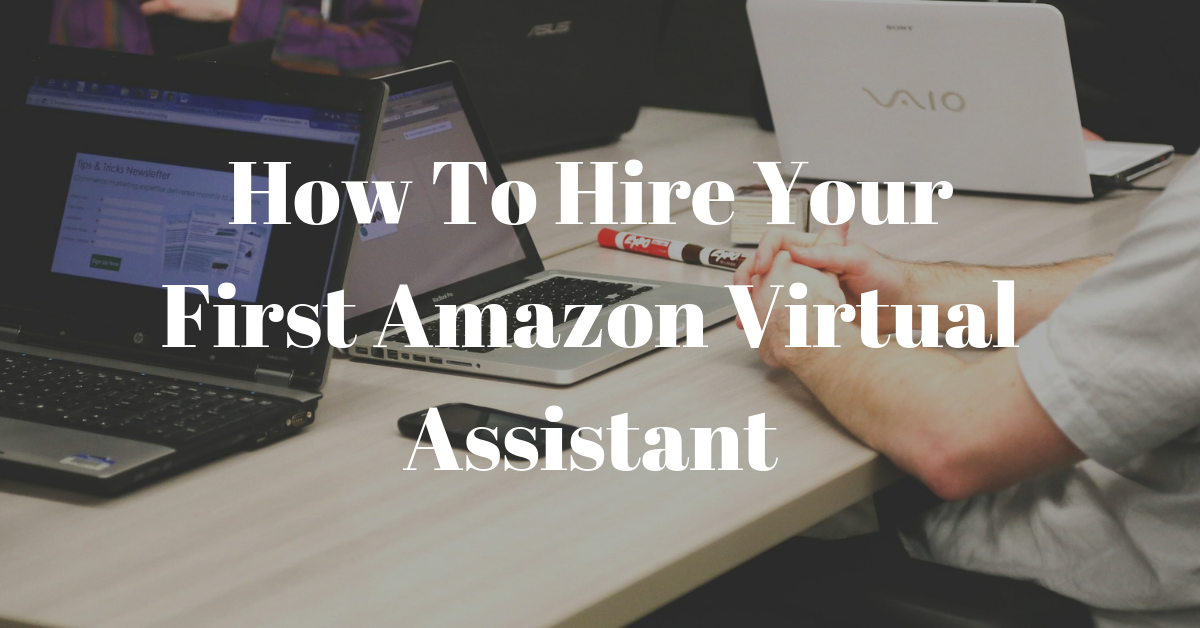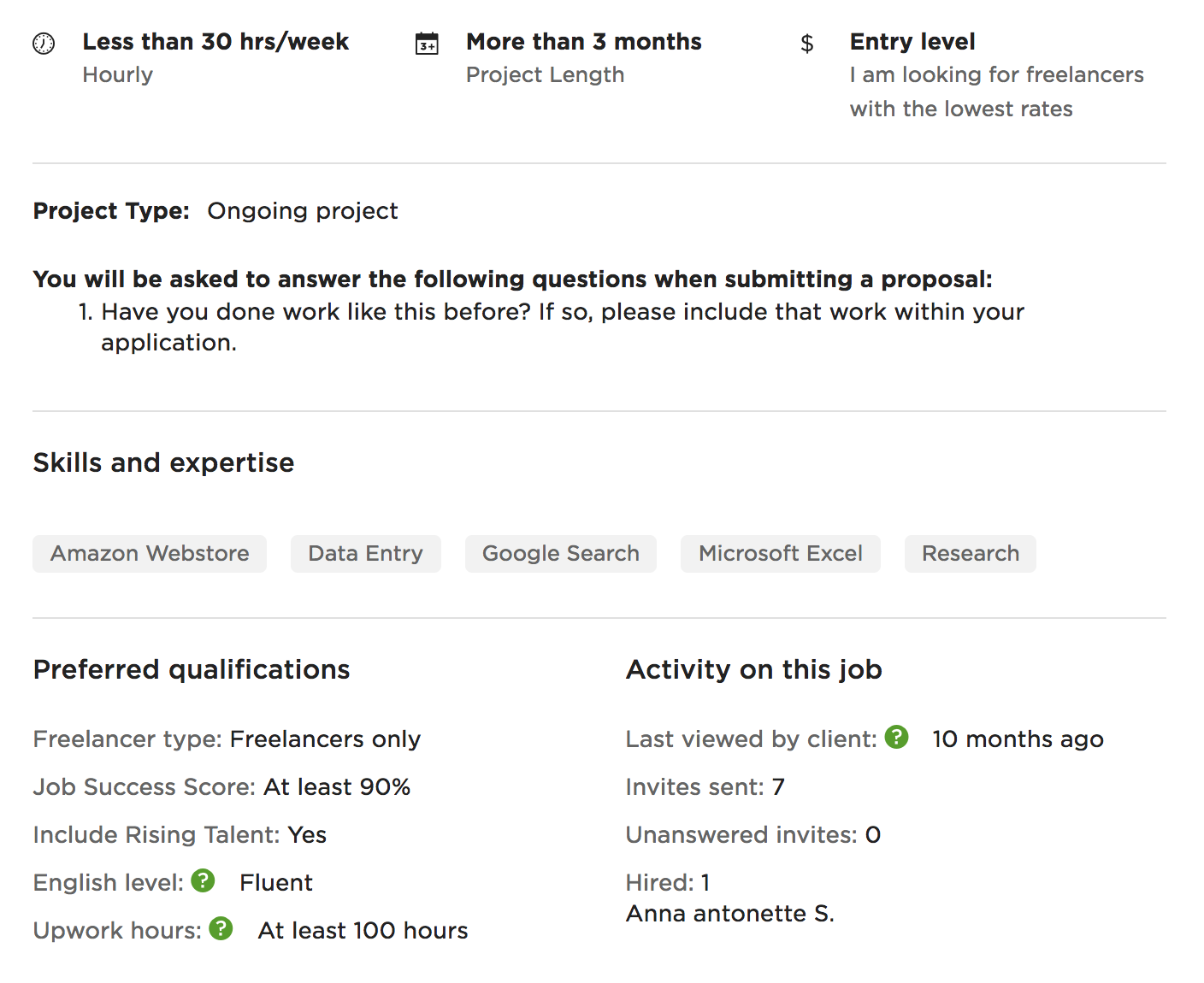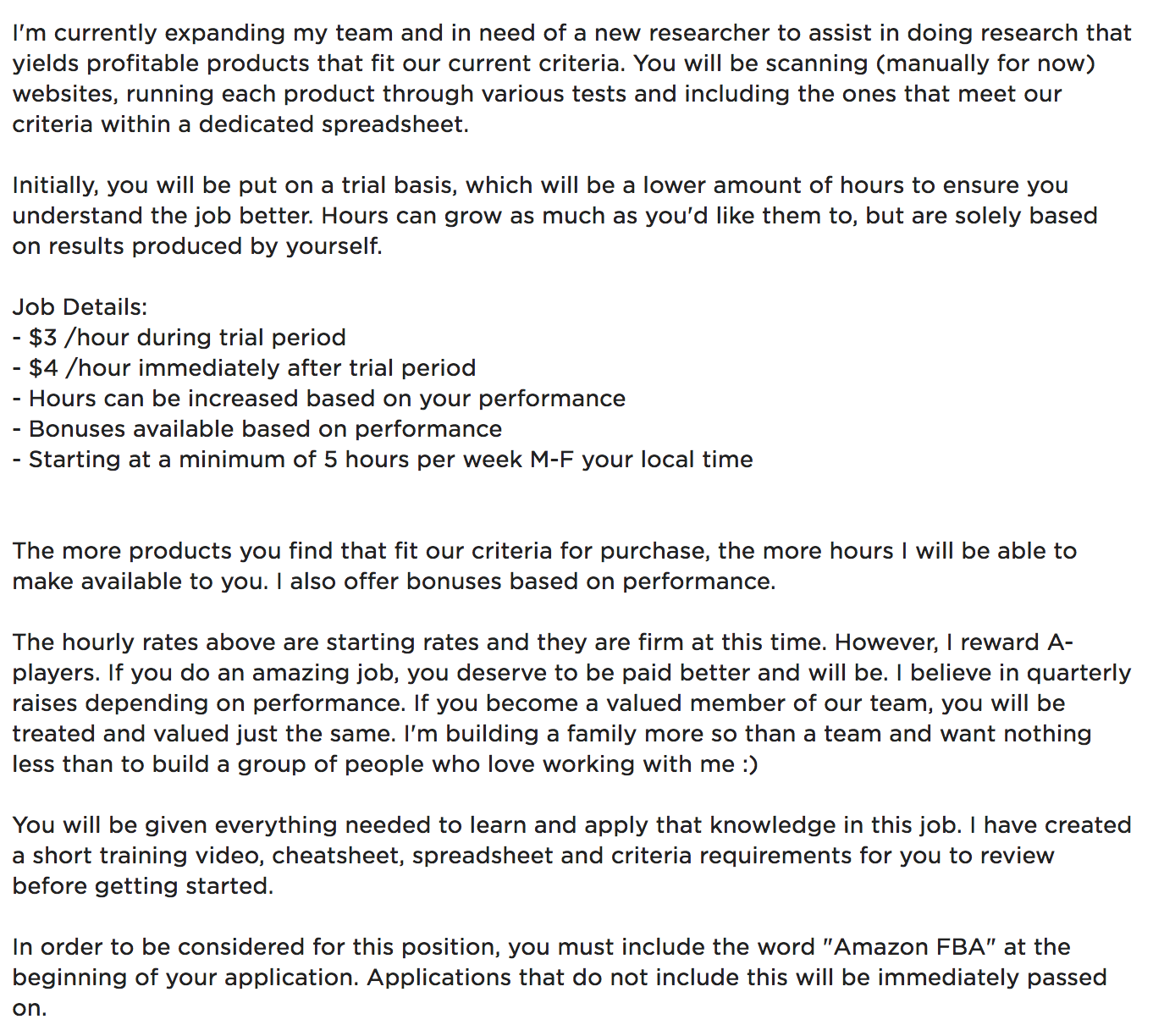
So you’re doing well with your wholesale Amazon business and you’re ready to start growing.
You’ve automated and streamlined every possible system in your business but now it’s time for something more in-depth. It’s time to hire your first Amazon Virtual Assistant!
Imagine waking up every single morning to an email from someone around the world who did the work you have been doing for months or even years.
Even better, your Vendrive account pipeline is filled with highly filtered products that meet all of your buying criteria. You quickly glance at the dozen or so, picking through the best.
Hiring a VA can free up so much time in your business and allow you to focus more heavily on higher-value tasks like talking more frequently with your suppliers, managing a small team, etc…
Basically, the tasks that help you grow from a one-person business doing six-figures to a small but effective team doing seven-figures or more.
Before you can jump to that highly effective team, you need to start with your very first hire. This person can reduce the number of products you’re scouting from hundreds to just a handful of higher selected products each week.
Let’s dive into the exact steps to hire your very first sourcing VA, examples of a job posting, how to test each one and ultimately how to pick the right person to move forward with.
Step One – Create Your Hiring Criteria & Post The Ad
Before we can even begin to create a job post we need to know what exactly we’re looking for. Do we want a VA who’s never worked for an Amazon seller before?
Do we want someone who knows how to source a little bit already?
Where do we want to hire from around the world? What would we pay hourly?
I personally default to hiring in South East Asia (Read: The Philippines) for two very important reasons. They are incredibly loyal people, they speak amazing English and they have similar cultures to our own.
Because of these two variables, not much is lost in translation, unlike what can be experienced with an Indian virtual assistant where there is too much of a language and cultural barrier.
Knowing where we want to hire also helps us understand what we’re going to be paying per hour as most rates are set geographically. For a sourcing VA in SE Asia, we’ll be paying anywhere from $3-6 per hour.
(Quick note – When it comes to paying a virtual assistant don’t be cheap. Long gone are the days of paying someone $1 per hour for work and rightfully so. Most VAs take care of their families with their virtual income from businesses like ours. Pay competitive rates and when you find an amazing person, quickly pay them more. This is just good practice).
Next question we need to ask is what we need that VA to actually do in our business.
Just like we wouldn’t want a boss to randomly dump tasks on us we weren’t hired to do, we won’t do the same to our VA. Typically I won’t ask a VA to do a task that wasn’t included on the job description so really think this through.
Although, it never hurts to ask if they can do a task that wasn’t on the description. Just don’t give them issues over saying no if they can’t.
We now have a very clear idea of what we need a VA to do, where we want to hire from, and some idea as to what it would cost us per week or per month to have that VA either part-time or full-time.
To start the actual hiring process, head over to Up Work and create an account as a Client.
When creating your job, you’ll be asked for some filters like location, selecting pay, if you’ll pay based on hours or project and requirements for skill sets that Up Work can actually verify. Here’s what mine typically look like for sourcing…

You can see what I filter for:
- Fluent in English
- Success score of 90% or more
- Worked at least 100 hours on Up Work
- I asked if they’ve done this type of work before and to show examples if they have
- Skills – Amazon Webstore, Data Entry, Excel, Research and Google (Basically any tool they will be using, like Vendrive)
Here’s an example of my most recent job description on Up Work for a sourcing VA

You’ll notice a few things I did that really stand out and help me during the filtering process, which comes next.
- I clearly lay out pay and that during the trial phase it’s a bit lower
- I set clear expectations for someone applying so that many questions don’t need to be asked regarding how many hours they will start with, how they can increase their weekly hours and that bonuses are attached to performance (more on this later.)
- They can work their local time instead of having to work during the night (my local time) which is a huge benefit socially
- Lastly, I require them to start their proposal with the term “Amazon FBA” which quickly lets me know if they actually read the description in depth or not. A players read everything, basic people are too lazy
The point here is that your job description clearly lays out what they will be doing from a higher-level and answers many questions they may have about the job, such as pay.
This greatly helps people pre-filter themselves so if they aren’t a good fit, you won’t spend any time with them which is wasted.
If you want a full video version of this guide I uploaded it to Udemy. You can get the full video training here at no cost.
Step Two – Quickly Filter Through Applicants
At this point, we’re wasting as little time as possible to find the top 3 applicants that will then compete against each other (non-hunger game style) for the position.
To quickly filter through, you should immediately delete any applications that didn’t include your keyword – in our case, it was “Amazon FBA.”
To filter even further, look for any generic proposals which are obvious they put zero time and effort into. You’ll most likely be down to less than 10 applicants at this point.
From here, we’re now filtering based on experience doing this particular job, how long they’ve been working on Up Work (Hours Worked) and the quality of their application as a whole.
Pick the top 5 applicants and reach out with some follow up questions to really see how they communicate and how quickly they respond. Take the 3 best applicants from here and move them into the testing step.
Filtering applicants shouldn’t take more than 1-2 days to fully go through. The majority of the time will be waiting for responses from the top 5 you filtered down to.
Step Three – The 2 Hour Test To Find The Best Amazon virtual assistant

A very important step in hiring your first VA is to properly test them before committing to them. This is the brief dating phase before proposing.
You’ll see in the above image that I laid out exactly how the test will work. I’ll pay them the trial rate of $3 per hour for the 2 hours and will even pay them during the training they’ll go through (always good practice to do so).
However long I think it would take someone to go through the training materials I created, I add a 50% buffer. So if I assume it would take an hour, I give them 1.5 hours.
You don’t really want anyone rushing through the knowledge that will ultimately lead to their and your success.
After going through the materials, I ask them to stop and reach out with any questions they may have. If they don’t have any questions, I still have them stop and reach out before they can move forward to the full working test.
Your training material needs to be clearly laid out and in multiple formats. I use very clear Standard Operating Procedure (SOP) documents and a video of myself doing the work and explaining as I go. For most people, this combination is highly effective.
Here’s an example of two of my SOP documents for sourcing wholesale products and an older version of the same.
Hiring your first VA can feel extremely freeing, and it should be, but keep in mind that they aren’t a silver bullet. They will need time to gain experience, get better at the task and get more comfortable working directly with you each week.
This is normal and expected. Just don’t expect the world from a VA. They aren’t miracle workers but they will do a very good job.
Step Four – Make The Hire and Get To Work
How did each candidate do after the test? How many products did each one find? How many times did they need clarification compared to the others and which one really stood out?
Depending on these answers you’ll have found your ideal sourcing VA to bring on for 10+ hours per week at a total cost to you of $40-160 per week.
Congratulations! You found an amazing virtual assistant to help you source more wholesale products each week and free up more hours to spend building better relationships with suppliers to hopefully get exclusives.
This is ultimately the starting point to growing a wildly successful wholesale Amazon business.
This last step is ongoing, as there are a few things you should really keep in mind:
- Keep open lines of communication using a tool like Slack, especially as you begin to build a team that needs to work together.
- Ensure your VA has the proper tools to effectively get the job done. Having them do a task the hard way isn’t a good use of your time or theirs.
- Let them improve the process you read my SOP document, you’ll notice at the end that I encourage my team to make the process better and suggest tools or systems/processes.
- Set a weekly or monthly quota to ensure they are consistently challenged and producing results.
- I personally offer a $25 bonus for every supplier they bring to the business that I place an initial order with, as that is counted as a success.
Implementing this process shouldn’t take you longer than a few days, which is great because you could have your first sourcing virtual assistant almost immediately..
Even better, if the first attempt went well and your VA is producing profitable results, it’s even easier to repost the job on Up Work and hire a second VA in the same timeframe.
It actually scales pretty well assuming they’re producing results.
Ps. We’re currently building a feature for virtual assistants inside of Vendrive. This means an even more streamlined process for your wholesale sourcing efforts.






About The Author: Dillon Carter
Hi, with James, we're building Amazon tools that we wish we had when starting our own companies. We love tech, coffee, building systems and all things Amazon.
More posts by Dillon Carter